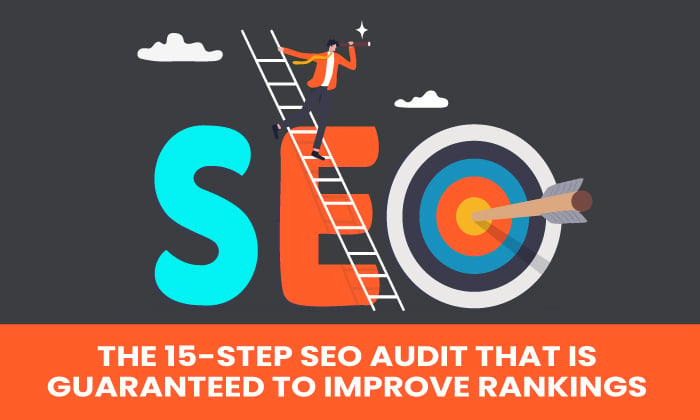Untangling Google SEO Dynamics: A Journey into Digital Optimization
SEO Vs. SEM: Recognizing the Trick Distinctions
In the world of electronic marketing, two crucial methods that usually turn up are search engine optimization and SEM. While they may appear comparable, they really serve different functions and have unique strategies. SEARCH ENGINE OPTIMIZATION, which means Seo, focuses on improving a website's visibility and organic position on internet search engine results pages. On the various other hand, SEM, or Internet Search Engine Advertising and marketing, entails paid advertising and marketing to boost a web site's exposure on online search engine. Comprehending the essential differences in between search engine optimization and SEM is vital for services seeking to optimize their on-line visibility and drive web traffic to their sites. In this article, we will certainly explore the meanings, goals, and vital elements of both search engine optimization and SEM, clarifying their special qualities and advantages.

Definition of SEO
SEO, or Look Engine Optimization, refers to the practice of optimizing websites to improve their presence and positions on online search engine results web pages (SERPs) It includes various strategies and approaches focused on enhancing natural, or non-paid, traffic to a site. The ultimate objective of SEO is to enhance an internet site's on the internet existence and draw in even more targeted visitors.
Among the crucial elements of search engine optimization is keyword optimization (https://buzzingglobe.com/news/linkdaddy-announces-agency-backlink-local-business-directory-listings-service/458323). This involves performing comprehensive study to recognize appropriate keywords that customers are most likely to look for when looking for details or products related to a certain internet site. By integrating these search phrases tactically into the internet site's material, meta tags, and Links, search engine optimization aims to enhance the website's significance and position for those particular search terms
An additional essential factor in SEO is on-page optimization. This involves maximizing various elements on an internet site, such as title tags, headings, images, and internal web links, to make them even more search engine-friendly (seo specialist). By making sure that these components are correctly structured and pertinent to the site's web content, SEO helps internet search engine understand the context and significance of the website
Additionally, SEO likewise consists of off-page optimization methods, such as web link structure. This entails acquiring premium back links from other trustworthy websites, which suggests to browse engines that the site is credible and authoritative. By constructing a solid network of back links, SEO enhances an internet site's reputation and improves its chances of placing higher in search engine result.
Definition of SEM
SEM, or Search Engine Advertising, is an advertising and marketing approach that entails advertising internet sites and boosting their presence with paid advertising and marketing on search engine results pages (SERPs) Unlike SEO, which concentrates on maximizing sites to enhance organic search rankings, SEM makes use of paid advertising and marketing to drive website traffic to an internet site.
Among the vital elements of SEM is pay-per-click (PAY PER CLICK) advertising. With PPC, advertisers proposal on keywords that are pertinent to their target market. When an individual look for those keywords, the advertisements appear at the leading or side of the search results page. Advertisers only pay when a user clicks their ad, thus the term "pay-per-click."

Present ads are banners or aesthetic ads that show up on websites within the Google Show Network. Remarketing advertisements target users that have formerly seen a site, offering them ads as they search other websites.
Purposes of SEO and SEM
The objectives of both seo (SEO) and internet search engine advertising (SEM) focus on enhancing a web site's presence and driving targeted traffic. Nevertheless, the approaches and methods employed by each differ significantly.
The primary goal of SEO is to enhance a web site's natural search position on search engine results pages (SERPs) This is achieved by optimizing various elements on the website, such as content, meta tags, and site framework, to make it much more appealing and appropriate to internet search engine. By doing so, SEO aims to attract even more natural website traffic from customers proactively looking for related search phrases or subjects.
On the various other hand, SEM concentrates on enhancing a web site's visibility through paid advertising on internet search engine. The key purpose of SEM is to drive targeted traffic to a site by bidding on key words and displaying advertisements in internet search engine results. This approach permits services to reach a bigger audience quickly and properly.

Key Components of Search Engine Optimization
To properly implement SEO, it is essential to understand the essential components that add to improving a site's organic search ranking. These parts can be extensively categorized into on-page elements and off-page elements.
On-page aspects describe the aspects that are directly existing on an internet site and can be optimized for better search engine visibility. This consists of the internet site's material, search phrase use, meta tags, URL structure, web page titles, and headings. By maximizing these aspects, internet search engine can better comprehend the relevance and context of the web site's web content, leading to higher positions.
Off-page aspects, on the other hand, focus on outside signals that influence a site's authority and trustworthiness. This includes back links from various other credible sites, social media sites signals, and on-line discusses (https://entertainment.easterntribunal.com/news/linkdaddy-announces-agency-backlink-local-business-directory-listings-service/458323). The more appropriate and top notch back links a web site has, the much better its possibilities of placing higher in online search engine results pages
Additionally, user experience is an important part of search engine optimization. seo agency. Browse engines prioritize websites that supply a favorable individual experience, including fast filling times, mobile-friendliness, and very easy navigation
Key Elements of SEM
As opposed to SEO, SEM encompasses a distinctive collection of essential components that concentrate on paid advertising and marketing and driving instant visibility in internet search engine outcomes. These components consist of online search engine advertising, additionally understood as pay-per-click (PAY PER CLICK) marketing, keyword research, advertisement development, and project administration.
Search engine marketing is an essential part of SEM. It includes bidding process on key phrases relevant to your organization and producing message or screen ads that will show up in online search engine results when those keywords are browsed. With internet search engine marketing, you can target certain demographics, locations, and even time of day to reach your preferred target market.
Keyword research is one more crucial component of SEM. It includes recognizing the key words that your target audience is making use of to look for products or services comparable to your own. By performing extensive keyword study, you can optimize your ads and ensure they are shown to the ideal individuals at the appropriate time.
Advertisement creation is the process of developing convincing and compelling advertisements that will certainly tempt users to click on them. Well-crafted ads have a solid call-to-action, relevant messaging, and a clear value proposition.
Lastly, campaign management involves monitoring and maximizing your SEM campaigns to ensure internet they are carrying out efficiently. This includes tracking metrics such as click-through rates, conversion rates, and return on investment (ROI) to make data-driven choices and attain the very best outcomes.
Conclusion
SEO focuses on maximizing websites to improve organic search positions, while SEM entails paid advertising and marketing to raise presence on search engine results web pages. Comprehending the distinctions between SEO and SEM is essential for businesses to establish a detailed online advertising technique.
SEO, which stands for Search Engine Optimization, concentrates on boosting a web site's exposure and organic position on search engine results web pages. On the other hand, SEM, or Search Engine Advertising and marketing, includes paid advertising and marketing to boost a site's visibility on search engines (Linkdaddy).SEARCH ENGINE OPTIMIZATION, or Browse Engine Optimization, refers to the practice of maximizing web sites to improve their presence and positions on search engine results pages (SERPs)The major goal of Search engine optimization is to boost a website's organic search position on search engine results pages (SERPs) Search engine optimization focuses on enhancing web sites to boost organic search positions, while SEM involves paid advertising to increase visibility on search engine results web pages